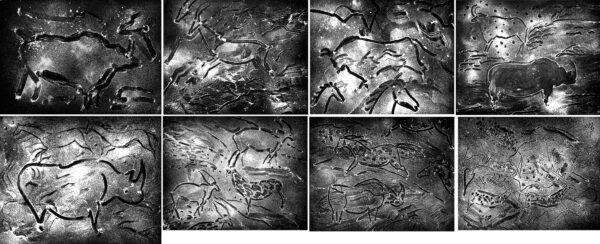Elaine de Kooning died in 1989. Besides developing a long unbroken career as a painter, she was a central figure in New York City’s artistic circles of the 1950s and 1960s, and a major writer on contemporary American art, publishing reviews and monographs (often under a pseudonym), mainly in ARTnews. She was married to one of the most celebrated artists of our time, Willem de Kooning. “Elaine de Kooning searches the limits of visuality to find the visionary, like a water diviner searching ground with her divining rod to find the invisible underground spring,” wrote Rose Slivka in Arts Magazine in 1984.
Born in Brooklyn, de Kooning began drawing at the age of five, inspired by trips to museums. She attended the Leonardo da Vinci Art School in New York City, where she met Willem de Kooning. They were married in 1943. She continued her studies at the American Artists School, where she earned money working as an artist’s model. During the 1940s, she painted portraits of her family, her husband, and many of her literary friends and fellow artists, including the poets Frank O’Hara and Allen Ginsberg and the choreographer Merce Cunningham. Although these portraits are highly regarded today for their freshness and verve, at the time de Kooning considered them to be private efforts. Her most celebrated portrait series was done in 1962–63, when she was invited to paint President John F. Kennedy, on whose image she worked for nearly a year, until the time of his assassination.
After the summer of 1948, which she spent at Black Mountain College, de Kooning painted a dramatic series of sports figures. Their bold, fresh colors and energetic use of an abstract expressionist approach for clearly figurative forms became de Kooning’s signature style. A visit to the Southwest in 1957 inspired a series of paintings on the theme of the bull, which opened de Kooning’s palette to sweeping planes of luminous colors. In the 1970s, she taught at numerous colleges including Yale University, Pratt Institute, University of Pennsylvania, and Rice University. From 1976 to 1978, a Bacchus statue in the Jardin de Luxembourg, Paris, became the subject of an extensive series of paintings and prints that fused de Kooning’s shimmering energy with her mastery of light and color. In 1983 she made several excursions to the Paleolithic caves of France and Spain, where she absorbed ancient drawings of bulls, mammoths, and bison, and reflected them in her final series of paintings and prints. Crown Point Press published etchings titled Torchlight Cave Drawings in 1985.
Elaine de Kooning’s paintings are in the collections of many major American museums, including the Guggenheim Museum and the Museum of Modern Art in New York, the Corcoran Gallery in Washington, DC, and the Albright-Knox Gallery in Buffalo, New York. The estate of Elaine de Kooning is represented by the Salander O’Reilly Gallery, New York.
-Dana Zullo, Crown Point Press
BOOKS ABOUT THE ARTIST


